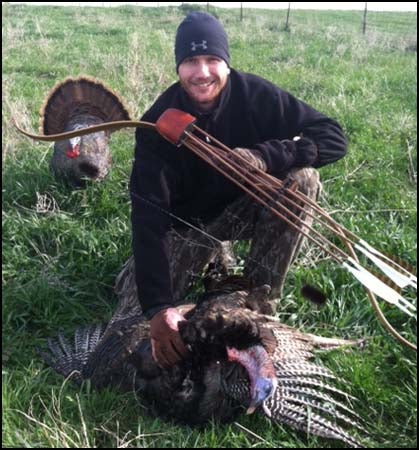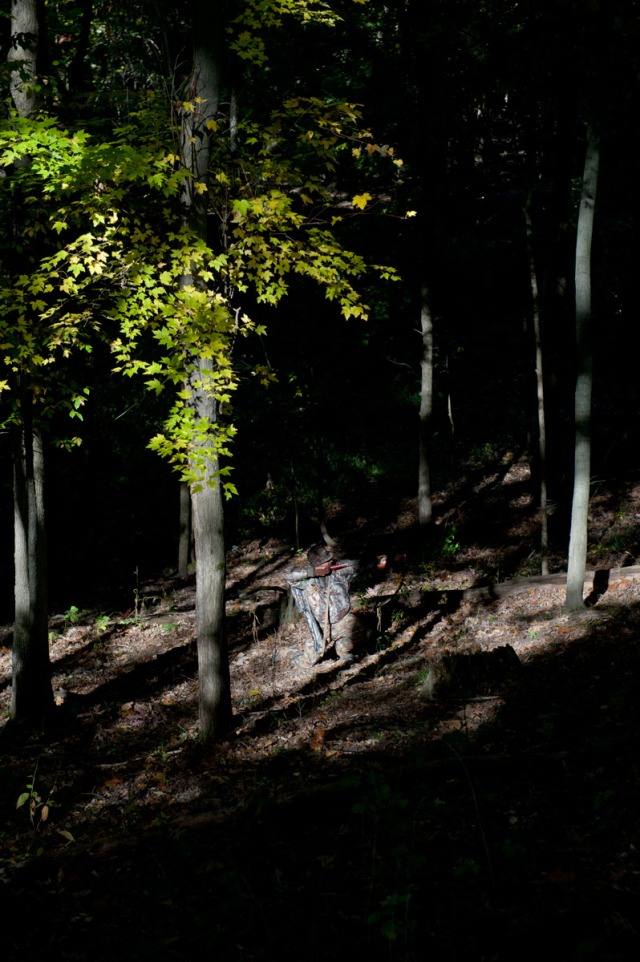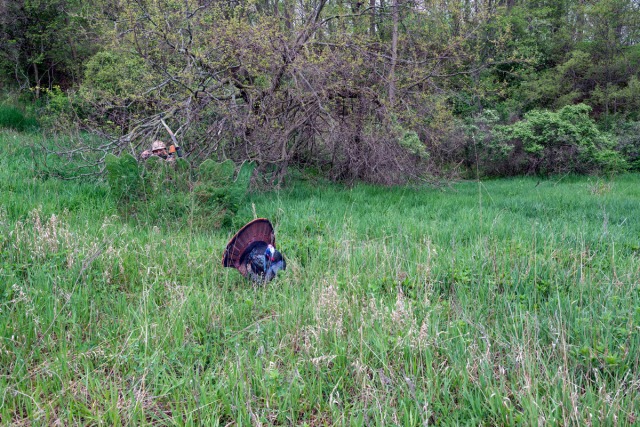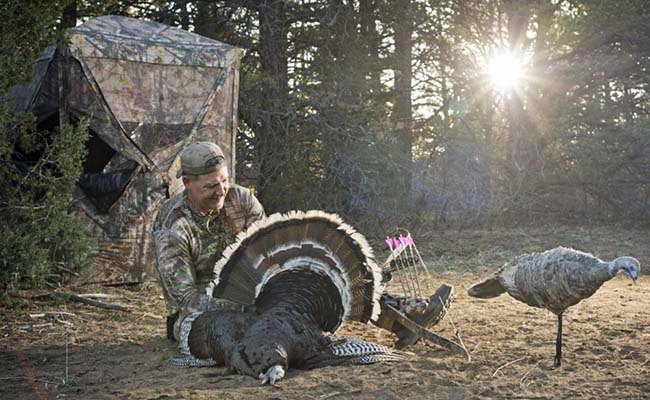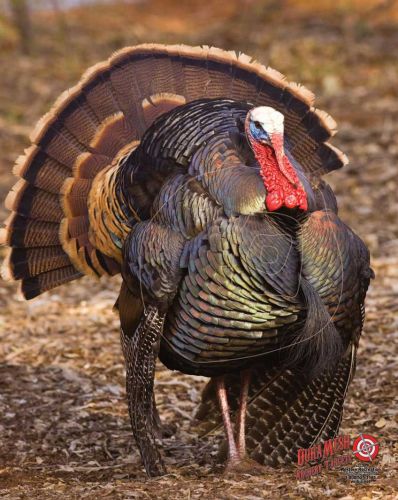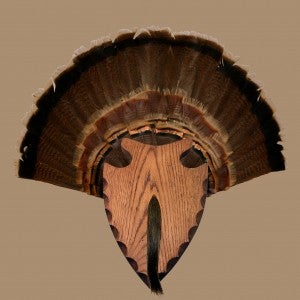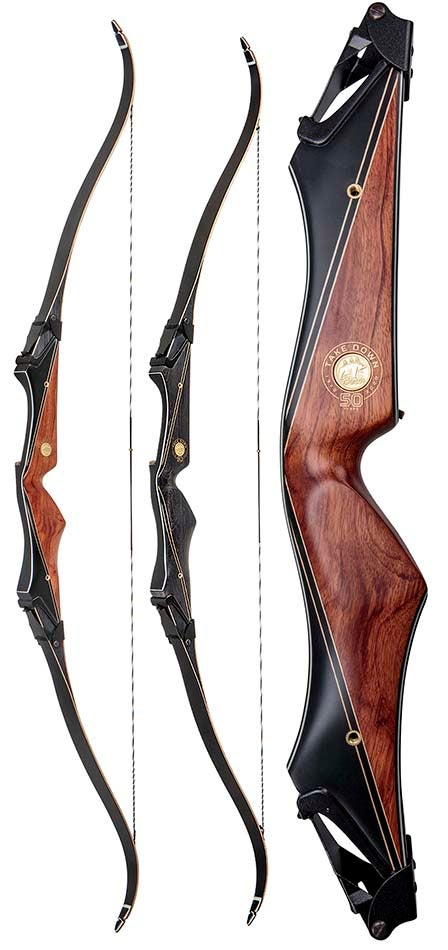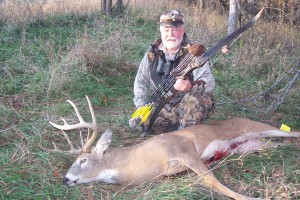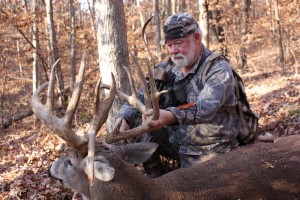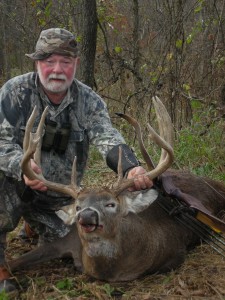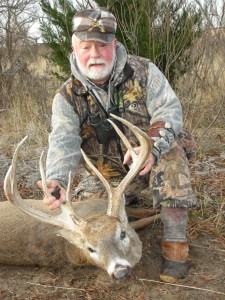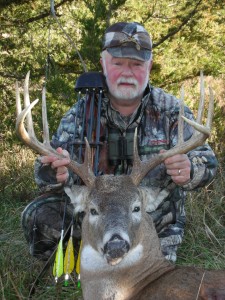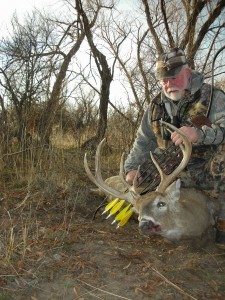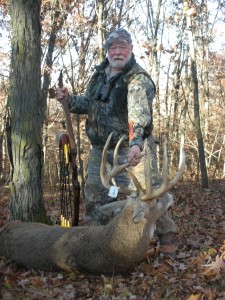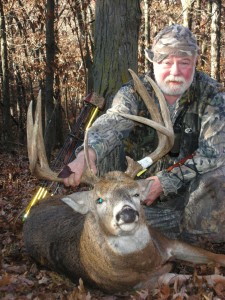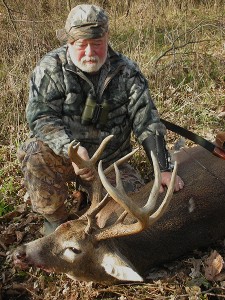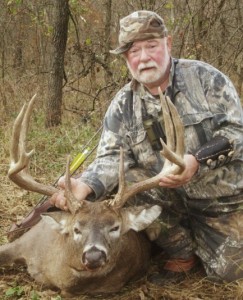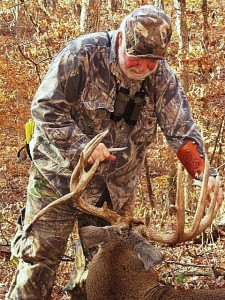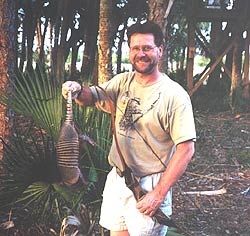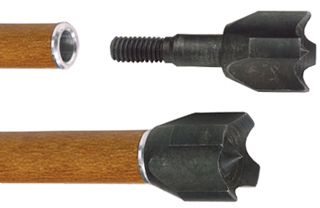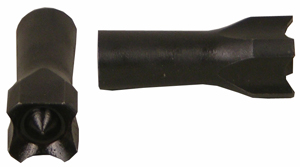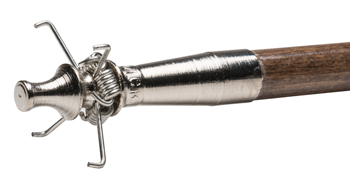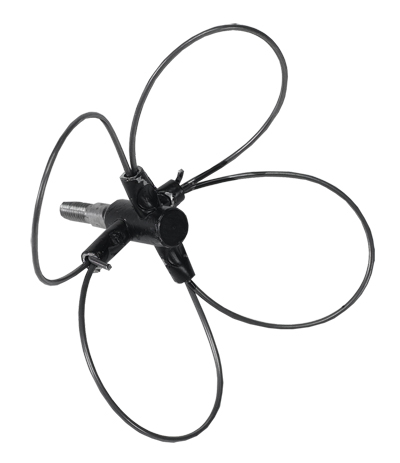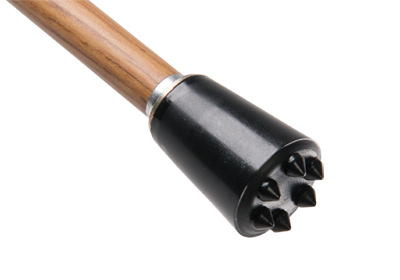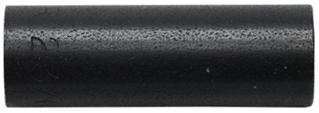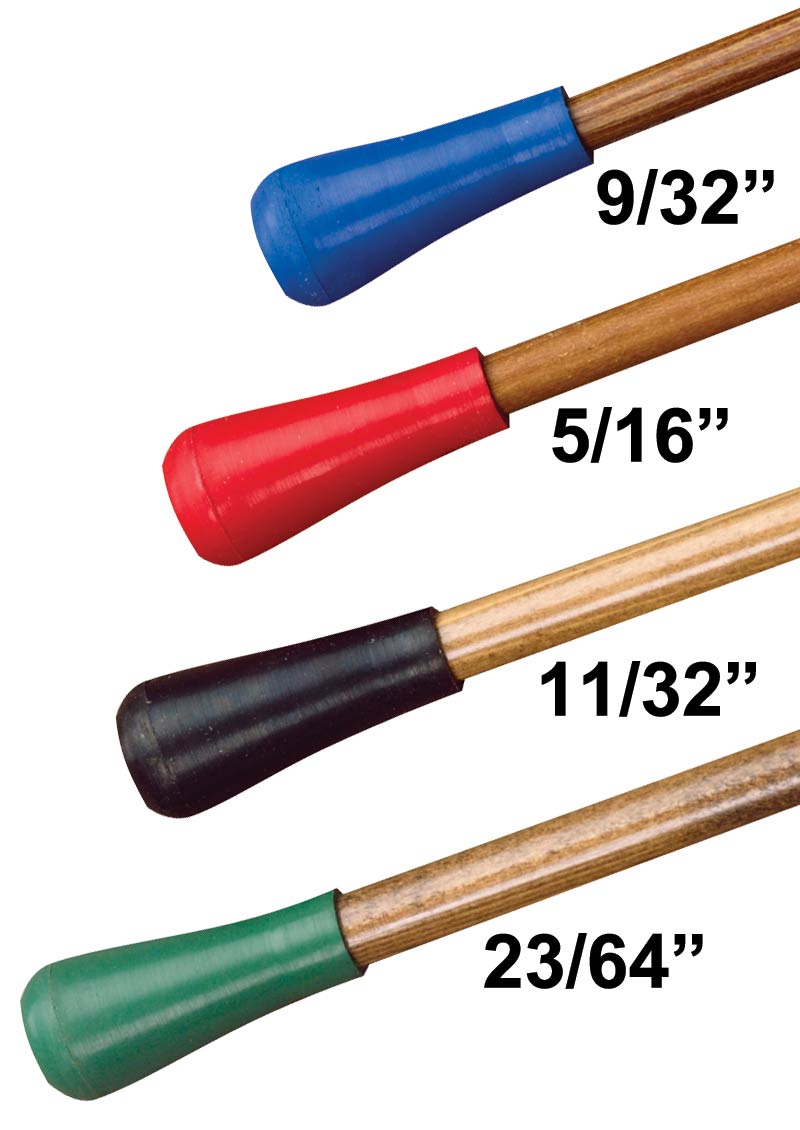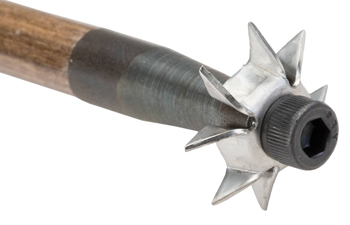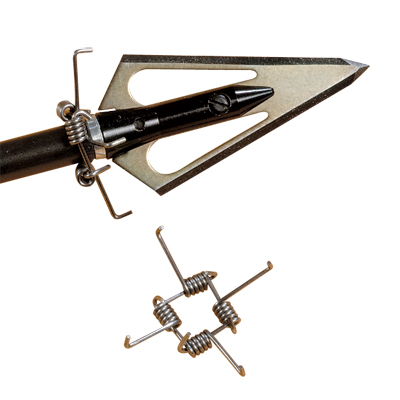
Clinton Miller lives in the hills south of Stanthorpe, Queensland, Australia, where it is currently deer season. This article has been re-published here with permission of Clinton Miller. “It’s the first kill for this bow. The shot went in as pictured and came out about 6” lower on the opposite side. Got one lung and the liver. He only went maybe 70 meters. The Axis arrows, grizzly heads, adapters, feathers, inserts, and some various other bow accessories used were purchased from 3Rivers Archery.”
By Clinton Miller
A long time goal was achieved last weekend. For quite a few years I have been trying to take a deer, any deer with a bow. I have been unfortunate to have lost some and until now I haven’t been able to seal the deal. It felt like there was some sort of protective force field around every deer I shot at.

Well March and April for us is what September and October is for you guys and the fallow deer that I have access to do their thing in these months. I vowed to myself to make 2015 ‘the year of the deer’ and I’ve put in a day every second weekend since February at the property hoping to put to bed this deer hoodoo I had going.
The property is relatively new to me so I started going out there in February to get to know the place and to scout for deer. On the 1st trip, I spotted some does in their beds and made a stalk to about 20 yards but was foiled by a tree that was just behind the crease of the doe I shot at. Yep, dead centered the tree. Remember that force field I told you about …
Fast forward a few trips and the end of March rolls in. This time I was hoping that by now they should be responding to the rattle of a pair of antlers. Up until then they haven’t been.
I arrived at the place by mid afternoon and planned on an afternoon hunt, stay the night, a morning hunt and be back home by lunch the next day.
I checked the wind and accordingly, made plans to circle wide and come in behind the area I wanted to hunt, which is a trail with scrapes I found the week before. The idea was to setup in sight of the scrapes and rattle hoping to deceive a buck into thinking a rival was on his turf and coax him into range.
A little way into the walk I dropped into a rocky little creek, dotted with small rock holes full of water from recent storms. It was a beautiful little locale. A small cascade, surrounded by steep sided walls of rock. I thought to myself, “This is a nice little spot.”
I was standing in the creek bed enjoying being there when I looked up stream and saw a white figure walking down into the creek. My first thoughts were that it was a Billy goat and I casually lifted the binos to check him out. I had no intention of shooting a goat this trip so I was just going to watch him do his thing.
However the binos revealed a white buck. PANIC mode! Get out of the creek before he sees me. Hurry up and find a spot to setup for a rattle. Get the pack off and get the antlers, quick, hurry.
There were two ways that he might come in to the rattle, if he did at all. Down the creek or from above on the creek bank. I wasn’t sure where he was so I was watching both areas as I started rattling. Sure enough he must have been still in the creek bed because after only a few light rattles I saw his antlers coming down the creek. Now that I knew which way he was coming I knelt down and got into a more concealed position. As I did I drove the barbed spikes of a tiger pear cactus into my shin. What a time to do that. Here I was trying to get into a comfortable position with a tiger pear hanging off me.
The buck kept coming and revealed himself broadside at around 13 meters (roughly 14 yards). His chest seemed to fill my field of view. It looked so big that I remember thinking I can’t miss this, I must have been so focused.
As soon as he stepped out I drew and released. As I was drawing he turned his head and looked at me. It was too late though, the arrow was about to hit and seal his fate.
The instant it hit him I knew it was a good shot and thought for sure I’d just killed my first deer with a bow. He crashed off in the direction he came from and not wanting to push him I turned my attention to extracting the tiger pear from my leg. These things have 1.5″ spines that must have microscopic barbs because they are a right pain in the butt to get out. They will hang on, pulling a big fold of skin with them when you attempt to pull them out. They freakin’ hurt too. A couple of them went in 3/8″.
By the time I sorted that out it was time to take up the trail. At the site of the hit there was a good splash of blood on the rocks but it soon deteriorated to just drops then further to having to follow his tracks. I found the arrow and there was blood on it, the dark red type, not as reassuring as the bright pink stuff. Though there were a few little bubbles amongst it, indicating some lung damage.
Continuing to follow his tracks I seemed to lose them after about 40 meters. Puzzled to where he might have gone I went ahead a little too where I thought he may have gone.
I remember looking at the ground wondering where he could have gone and then looking up to my left over the other side of the creek and bingo, there he was, a pale figure lying in a small gully that runs into the creek.
“How did you get over there,” I thought. I backtracked a little more and soon found the spot where he entered the creek and crossed over and joined a trail leading right to where he was. It pays to look for the trail even if you have found the animal as you will most likely learn a valuable lesson about the situation.
The first emotion that hit me was that of relief. I finally proved to myself that it is actually possible to kill a deer with a trad bow. They aren’t an immortal creature after all.
It’s hard to describe the emotions felt, but you all know what I mean. A mix of sadness, deep respect, gratitude, contentment, sorrow, relief and more I don’t understand.
I sat with him for a moment and laid my hand on his fur thankful for this moment and I silently said to him that I will carry out every bit of meat. I would feel like I didn’t fully respect his life and the fact that I ended it if I didn’t.
I took some photos then started the task of field dressing him for packing out.
It was getting on and darkness, I knew, would beat me. I got a lot of it done before I needed my torch, just as well too, because the batteries went flat after about 15 minutes, leaving me trying to dress my first archery deer in the dark. It was time to use something I’ve been carrying for years in my little first aid kit; I finally got to use the most traveled light stick in Australia.
It was a whole lot brighter than I thought it would be and made the job heaps easier. After about an hour I had it all packed up on the kifaru spike camp ready for the haul back the Ute. I reckon it would have weighed easily 50kgs, (100lbs). I left the skin and ribs there for the night and went back in the morning for a second load.
The pack out was tiring but rewarding. Under the light of a half moon, thank goodness.
I remember thinking as I was walking out, that this is how it should be and how I wanted it to be. Working hard, earning the venison. I didn’t want the first to be any other way.














.jpg)
